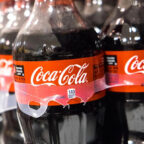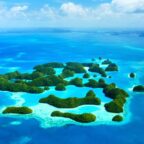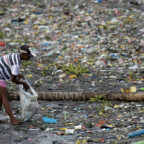
Divers have gathered shocking images of the devastating impact disposable masks are having on the environment and our oceans, ending up washed-up among coral reefs and damaging the health of marine animals. The coronavirus pandemic has caused a surge in pollution, adding to the plastic waste that is already threatening marine life. Divers have seen throwaway facemasks and plastic gloves floating around the ocean like jellyfish.
Environmentalists have warned how sea creatures such as turtles, whose habitat are the tropical waters close to Manila, the Philippines, will be unable to distinguish food from plastic waste.
Since March 2020, the RSPCA has said they have had to help more than 900 animals caught in discarded PPE, the majority being birds. Seabirds and other animals can get themselves entangled in the straps of throwaway masks.
Diver Shala Caliao said pollution in the ocean had got worse with facemasks joining food wrappers and plastic bottles in the once pristine waters.
“Within 10 minutes into the dive we saw about 12 masks and we had never seen that before. Some had been there for months.”
She added: “When I first saw the masks, I honestly felt guilty and sad because I’ve used a blue PPE mask that is so easy to throw away.”
The divers are now urging the Philippine government to improve it’s handling of medical waste and PPE, to help prevent further pollution of the oceans. Greenpeace Philippines has urged people who are not medical professionals or in a high-risk category to use reusable face coverings instead of disposable ones, in a bid to reduce pollution.
The organisation said: “Wearing face masks is now part of our daily lives. But this has been shown to have an adverse effect on the environment. We can do something about it by factoring in the planet in choosing the mask we use and how we use it.”
According to a study in Environmental Technology and Science, an estimated 194 billion disposable gloves and masks are used worldwide every month due to the pandemic.
The majority of single-use PPE is made up of a variety of plastics including vinyl, polyethylene and polypropylene, meaning they can take as long as 450 years to break down. And even then, tiny microplastics still stick around.
These tiny microplastics have been found all over the world, including the Antarctic and the Arctic.















Social Profiles